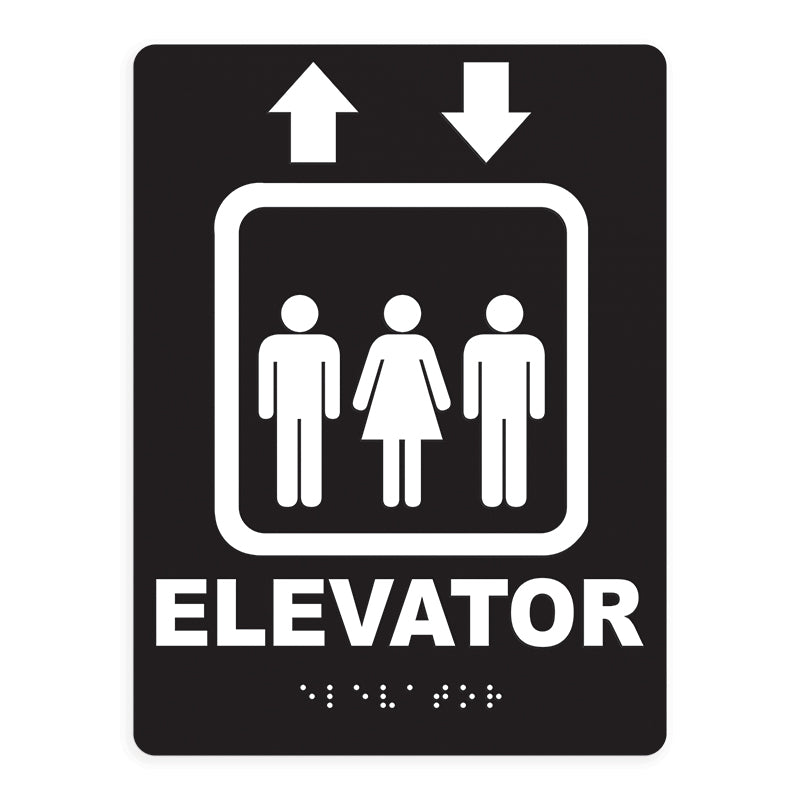ADA Signs: Important Devices for Inclusive Environments
ADA Signs: Important Devices for Inclusive Environments
Blog Article
Exploring the Key Features of ADA Signs for Enhanced Availability
In the realm of ease of access, ADA indications offer as quiet yet effective allies, making sure that areas are navigable and comprehensive for people with impairments. By incorporating Braille and tactile components, these signs break barriers for the aesthetically impaired, while high-contrast color systems and readable font styles provide to varied visual demands.
Relevance of ADA Compliance
Making certain compliance with the Americans with Disabilities Act (ADA) is important for promoting inclusivity and equal gain access to in public areas and offices. The ADA, established in 1990, mandates that all public centers, employers, and transport services fit people with specials needs, ensuring they appreciate the same rights and possibilities as others. Conformity with ADA criteria not only satisfies lawful responsibilities yet likewise improves an organization's credibility by demonstrating its dedication to variety and inclusivity.
One of the essential aspects of ADA compliance is the execution of obtainable signage. ADA signs are designed to make sure that people with handicaps can quickly browse via buildings and rooms.
Moreover, adhering to ADA regulations can minimize the risk of prospective fines and lawful consequences. Organizations that fail to comply with ADA standards might deal with suits or charges, which can be both destructive and monetarily challenging to their public photo. Therefore, ADA conformity is essential to fostering an equitable environment for everyone.
Braille and Tactile Components
The consolidation of Braille and responsive components into ADA signs symbolizes the concepts of accessibility and inclusivity. It is typically placed underneath the equivalent text on signage to guarantee that people can access the information without aesthetic aid.
Responsive aspects extend beyond Braille and include increased symbols and personalities. These parts are developed to be discernible by touch, allowing individuals to determine room numbers, washrooms, leaves, and various other crucial locations. The ADA establishes particular guidelines concerning the size, spacing, and positioning of these responsive aspects to maximize readability and ensure consistency across various settings.

High-Contrast Color Design
High-contrast color design play a pivotal duty in boosting the visibility and readability of ADA signage for individuals with aesthetic impairments. These systems are important as they make best use of the distinction in light reflectance in between message and history, ensuring that indicators are quickly discernible, also from a range. The Americans with Disabilities Act (ADA) mandates the use of particular shade contrasts to accommodate those with restricted vision, making it an important aspect of compliance.
The efficacy of high-contrast shades depends on their capacity to stand apart in various lighting problems, consisting of dimly lit atmospheres and areas with glare. Normally, dark text on a light background or light text on a dark background is used to accomplish ideal comparison. For circumstances, black message on a yellow or white history gives a raw aesthetic difference that helps in fast acknowledgment and understanding.

Legible Fonts and Text Size
When thinking about the layout of ADA signs, the choice of understandable typefaces and suitable message size can not be overemphasized. The Americans with Disabilities Act (ADA) mandates that font styles have to be not italic and sans-serif, oblique, view script, very decorative, or of unusual type.
According to ADA standards, the minimum message height must be 5/8 inch, and it needs to raise proportionally with checking out range. Uniformity in text dimension adds to a cohesive aesthetic experience, assisting people in navigating settings efficiently.
Furthermore, spacing in between lines and letters is essential to readability. Appropriate spacing prevents characters from appearing crowded, enhancing readability. By adhering to these criteria, developers can considerably enhance access, making sure that signs serves its designated function for all individuals, regardless of their aesthetic abilities.
Reliable Placement Techniques
Strategic positioning of ADA signs is crucial for maximizing availability and making sure conformity with legal standards. ADA guidelines stipulate that signs ought to be installed at a height recommended you read in between 48 to 60 inches from the ground to guarantee they are within the line of view for both standing and seated people.
Furthermore, signs have to be placed adjacent to the latch side of doors to permit very easy recognition before entry. This positioning helps individuals locate areas and rooms without obstruction. In cases where there is no door, indications need to be positioned on the nearby adjacent wall surface. Consistency in sign positioning throughout a facility improves predictability, lowering complication and boosting total user experience.

Final Thought
ADA signs play a crucial duty in promoting accessibility by integrating attributes that address the demands of individuals with specials needs. These aspects jointly foster an inclusive setting, emphasizing the significance of ADA conformity in making sure equivalent accessibility for all.
In the realm of availability, ADA indications offer as quiet yet effective allies, ensuring that areas are comprehensive and navigable for people with disabilities. The ADA, enacted in 1990, mandates that all public facilities, companies, and transportation services suit people with handicaps, ensuring they delight in the same rights and chances as others. ADA Signs. ADA signs are designed to make sure that people with impairments can easily navigate with structures and rooms. ADA guidelines state that indicators must be mounted at a height in between 48 to 60 inches from visit this page the ground to ensure they are within the line of sight for both standing and seated people.ADA signs play a vital duty in advertising access by integrating attributes that resolve the needs of individuals with impairments
Report this page